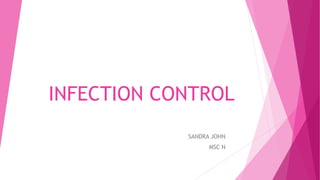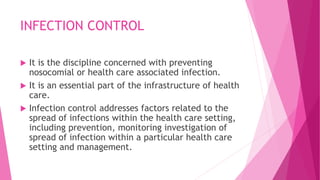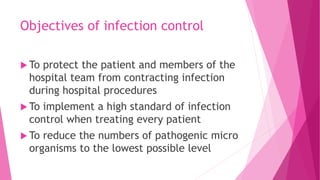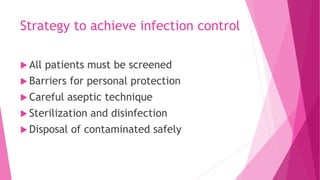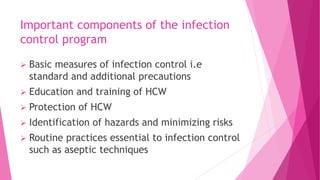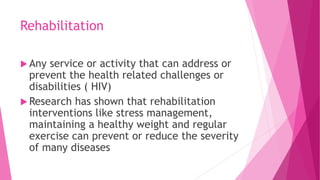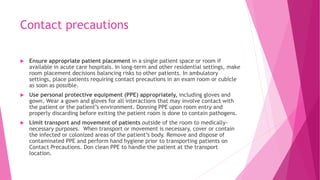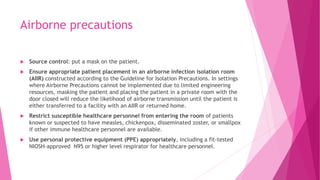The document discusses infection control in a healthcare setting. It defines infection control as preventing healthcare-associated infections and outlines its objectives like protecting patients and staff from infection. It describes strategies for infection control like screening, barriers, aseptic technique, and proper disposal. The importance of infection control is to prevent infections, provide safe services, and control costs. Key components of an infection control program are outlined like surveillance, education, and standard precautions.
